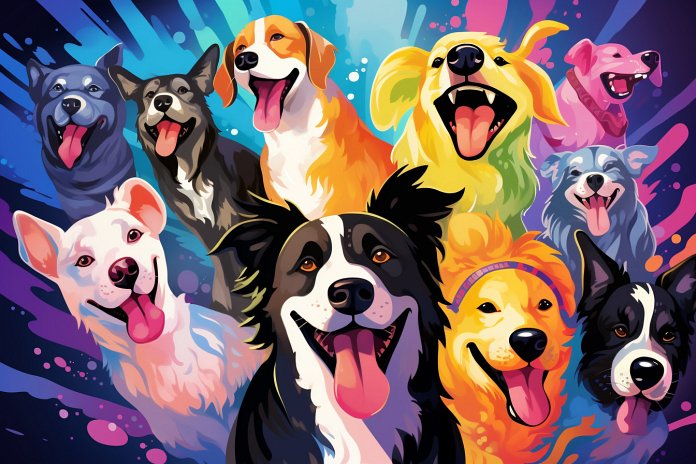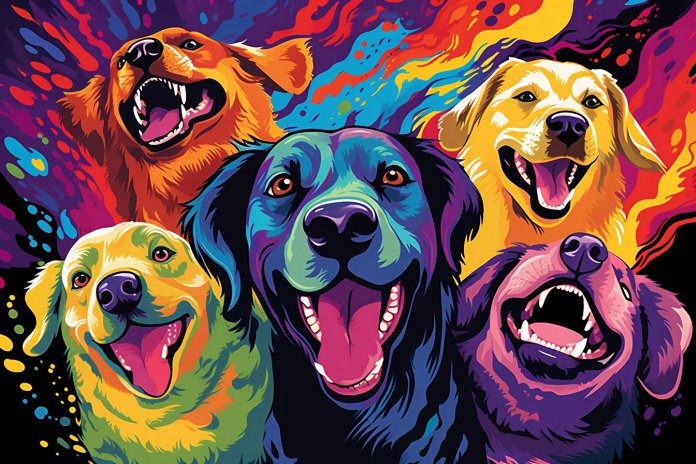
Dogs can experience dizziness for various reasons, such as vertigo, ear infections, injuries, vestibular syndromes, strokes, and more. This guide will help you understand the signs of doggy dizziness, how to help your dog during a dizzy spell, and how to reduce dizziness in your dog.
Signs Your Dog Is Dizzy
To determine if your dog is dizzy, look for signs such as being out of focus, stumbling, loss of coordination, walking funny, tucking their tail, pinning their ears down, whimpering, fatigue, lack of interest in activities, nausea, vomiting, and confused behavior.
Body Language
Observe your dog’s body language for cues of dizziness, such as panting, pacing, weakness, lack of focus, dropped ears, averting eyes, tail tucking, and ears back.
Other Signs
Pay attention to repetitive eye movement, stumbling and discoordination, lack of interest in playing, inability to stand up, nausea or vomiting, strange gait when walking, and a cocked head.
Historical Causes of Doggy Dizziness
Common causes of dizziness in dogs include ear infections, head trauma, strokes, brain tumors, and issues with the vestibular system, which affects balance.
The Science Behind Dog Dizziness
Dogs experience dizziness differently than humans. They are not affected by movements like spinning or chasing their tail. Dizziness in dogs occurs when there is a disruption in their vestibular system, which maintains balance.
How to Train Your Dog To Deal With Dizziness
If your dog is not affected by a serious condition, they can recover quickly with patience and medication. Train your dog to take medicine by incorporating it into a game or their food. Teaching them basic commands like “lay down” and “stay” will also help them during a dizzy spell.
“When it comes to doggy dizziness, understanding the signs and training your dog can make all the difference in helping them find their balance.”

Tips & Things to Know
1️⃣ Recognize the signs of doggy dizziness: Look out for symptoms such as loss of focus, stumbling, coordination issues, fatigue, lack of interest in activities, and nausea or vomiting.
2️⃣ Pay attention to your dog’s body language: Observe panting, pacing, weakness, dropped ears, averted eyes, tail tucking, and a cocked head as potential cues that your dog may be feeling dizzy.
3️⃣ Help your dog cope with dizziness: If your dog is experiencing dizziness, be patient and administer any necessary medication. Train your dog to take pills easily by incorporating them into a game or their food. Teaching basic commands like “lay down” and “stay” can also be helpful in managing their dizziness and keeping them calm during episodes.
Frequently Asked Questions, Answered ✅
1. What are some signs that my dog might be experiencing dizziness?
– Signs of dizziness in dogs can include stumbling, loss of coordination, fatigue, lack of interest in activities, nausea, vomiting, and unusual body language such as tail tucking and ears back.
2. What are some body language cues that indicate doggy dizziness?
– Body language cues that your dog might be experiencing dizziness include panting, pacing, weakness, lack of focus, dropped ears, averting eyes, and tail tucking.
3. What are some potential causes of doggy dizziness?
– Doggy dizziness can be caused by ear infections, head injuries, strokes, brain tumors, and issues with the vestibular system.
4. How do dogs experience dizziness differently from humans?
– Dogs do not experience dizziness from spinning around or certain movements like humans do. Instead, dizziness in dogs is typically caused by something affecting their vestibular system, which is responsible for maintaining balance.
5. How can I train my dog to cope with dizziness?
– Training your dog to take medication, teaching them basic commands like “lay down” and “stay,” and providing extra motivation to stay still during a dizzy spell can help them recover faster from dizziness.